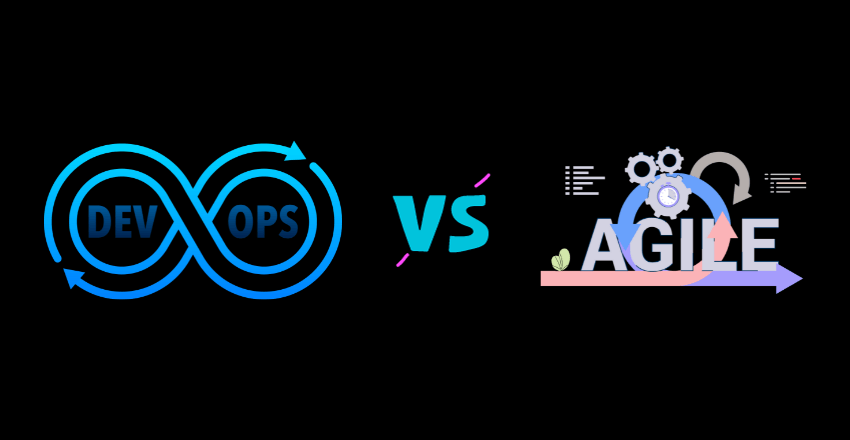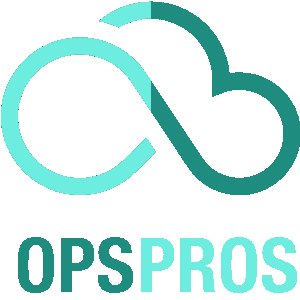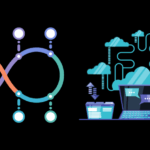
DevOps vs Agile Finding the Balance is the ultimate quest for modern businesses. By harmonizing these methodologies, companies achieve faster deployments and better collaboration. It’s the blueprint for operational excellence.
In the world of IT development, both DevOps and Agile methodologies have gained enormous popularity in recent years. DevOps focuses on collaboration and automation between development and operations teams, while Agile emphasizes iterative, customer-focused development. But which one is better, and can they work together? The answer lies in finding the right balance between DevOps and Agile for your organization.
Key Takeaways:
- DevOps and Agile methodologies have distinct differences, but share common goals.
- DevOps promotes faster and more efficient software delivery, while Agile enables flexibility and adaptability.
- The right balance between DevOps and Agile can enhance productivity, efficiency, and product quality.
Understanding DevOps and Agile
DevOps and Agile are two popular methodologies used in software development. While they have some similarities, they also have some distinct differences that separate them.
DevOps is an approach that emphasizes communication, collaboration, and integration between development and operations teams. The goal is to automate the software delivery process, reducing the time and effort required to deploy new features and updates.
Agile is a methodology that focuses on iterative development, continuous feedback, and customer collaboration. It emphasizes adaptability and flexibility, allowing teams to respond quickly to changing requirements and priorities.
One of the main differences between DevOps and Agile is their respective focuses. DevOps emphasizes the automation of software delivery, while Agile emphasizes iterative development and customer collaboration. However, both methodologies share a common goal of improving software quality and delivery times.
Another key difference between DevOps and Agile is their implementation. DevOps is often implemented through tools and technologies that automate the software delivery process, while Agile relies on frameworks such as Scrum and Kanban to enable iterative development and collaboration.
Overall, while DevOps and Agile have distinct differences, they can also work together to provide a more effective and efficient software development process. By understanding the key principles of each methodology, teams can find the right balance between them to achieve their goals.
Benefits of DevOps

Implementing DevOps methodologies in IT projects can bring numerous benefits to organizations. Below are some of the most significant advantages:
| Advantages | Details |
|---|---|
| Faster software delivery | DevOps enables software teams to deliver applications at a faster pace by automating the entire software delivery process. This leads to shorter release cycles and quicker time to market. |
| Improved collaboration | DevOps promotes better communication and collaboration between development and operations teams, which leads to a shared sense of ownership and responsibility for the success of the application. This, in turn, enables faster and more seamless problem-solving when issues arise. |
| Enhanced product quality | With automated testing, code reviews, and continuous integration, DevOps ensures that bugs and issues are caught early in the development process. This leads to higher-quality products that are more stable and reliable. |
By incorporating DevOps methodologies, organizations can reduce the risk of costly production failures, improve team morale, and create a more efficient and streamlined software development process.
However, the benefits of DevOps must be balanced with the associated costs and challenges, which will be further discussed in later sections of this article.
Advantages of Agile
Agile is a software development methodology that emphasizes flexibility, adaptability, and customer-centric development. It is designed to respond quickly to changing requirements and deliver working software in short iterations.
One of the key advantages of Agile is its ability to improve collaboration between development teams, stakeholders, and customers. By using practices such as Scrum, Kanban, and user stories, Agile encourages regular feedback and communication, which helps to ensure that the end product meets customer needs and expectations.
Another advantage of Agile is that it enables teams to respond quickly to changing requirements and market conditions. Because Agile projects are iteratively delivered in short cycles, teams can adapt to new information and feedback, ensuring that the product remains relevant and valuable.
Agile methodologies also promote transparency and visibility, which are essential for effective collaboration. By making progress, issues, and risks visible to all stakeholders, Agile teams can work together to find solutions and make informed decisions.
Overall, Agile is a highly effective methodology for software development in complex and dynamic environments. Its emphasis on collaboration, flexibility, and customer-centric development can help organizations rapidly deliver high-quality software that meets the needs of their customers.
Synergies Between DevOps and Agile
While DevOps and Agile have their respective focuses, they also share common goals and values that make them highly complementary. By combining the two methodologies, organizations can achieve greater efficiency, productivity, and quality.
One area of overlap between DevOps and Agile is the emphasis on continuous improvement. DevOps promotes a culture of continuous improvement in software delivery by encouraging feedback loops, collaboration, and automation. Agile similarly emphasizes iterative development, regular feedback, and continuous delivery of working software.
Another area of synergy between DevOps and Agile is the focus on cross-functional collaboration. DevOps encourages the integration of development, testing, and operations teams to break down silos and improve communication. Agile also emphasizes the importance of collaboration between team members, including product owners, developers, testers, and customers.
DevOps and Agile both also prioritize customer value and satisfaction. DevOps seeks to deliver high-quality software faster by reducing lead times, improving testing, and increasing deployment frequency. Agile, on the other hand, strives to deliver working software that meets customer needs and expectations through features such as user stories and frequent product demos.
By combining the strengths of both methodologies, organizations can achieve a holistic approach to IT project management that optimizes speed, collaboration, and quality.
Challenges in Implementing DevOps and Agile

Despite the potential benefits of DevOps and Agile methodologies, implementing them can be challenging. Some of the common obstacles organizations may face include:
- Resistance to change: Shifting to new processes and practices can be difficult, and team members may be hesitant to adopt these changes.
- Organizational silos: DevOps and Agile require cross-functional collaboration and communication, which can be impeded by organizational barriers. Teams with different goals, priorities, and metrics may struggle to work together effectively.
- Cultural barriers: Successful implementation of DevOps and Agile also requires a culture that values experimentation, learning, and continuous improvement. If the organization does not embrace these values, it may be challenging to achieve success with these methodologies.
To overcome these obstacles, organizations can take a number of proactive steps. It is important to engage stakeholders at all levels of the organization and communicate the rationale for change. Demonstrating the value of DevOps and Agile through clear metrics and success stories can also help build momentum and support for these methodologies.
Leaders can help break down silos by encouraging cross-functional collaboration and emphasizing shared goals and outcomes. Investing in training and education can also help teams develop the necessary skills and knowledge to work collaboratively and effectively under DevOps and Agile.
Finally, creating a culture of experimentation, learning, and continuous improvement requires ongoing effort and attention. Leaders can promote transparency, encourage feedback and reflection, and celebrate successes and failures as opportunities for growth and development.
Finding the Balance Between DevOps and Agile
While both DevOps and Agile methodologies offer unique benefits, finding the right balance between the two is crucial for the success of IT projects. It requires careful consideration of project requirements, team dynamics, and organizational readiness.
In order to strike this balance effectively, it may be necessary to blend certain practices from both methodologies. For example, a team may adopt the Agile practice of user stories to prioritize tasks, while also leveraging DevOps automation tools to streamline delivery.
It’s also important to foster a culture of collaboration and feedback, which is a core principle of both DevOps and Agile. This can involve facilitating cross-functional communication, holding regular retrospectives, and encouraging experimentation and innovation.
Ultimately, finding the optimal combination of DevOps and Agile practices requires a flexible and adaptive approach. By continuously evaluating and refining processes, teams can achieve greater efficiency, productivity, and customer satisfaction.
Best Practices for Combining DevOps and Agile

Integrating DevOps and Agile practices into IT projects can be challenging, but with the right strategies and best practices, organizations can achieve efficient and productive collaboration between development and operations teams. Here are some best practices for combining DevOps and Agile:
- Align development, testing, and deployment processes: Ensure that all teams involved in the project understand the shared goals and work towards achieving them. This can involve implementing a CI/CD pipeline and automating testing processes to increase speed and efficiency.
- Implement automation: Automation can save time and reduce errors in the development process. Tools such as Ansible or Puppet can be used to automate infrastructure provisioning and configuration management.
- Foster a collaborative and feedback-driven culture: Collaboration is key for successful DevOps and Agile implementation. Promote a culture of sharing knowledge, feedback, and ideas between teams. Hold regular retrospectives to identify areas for improvement and celebrate successes together.
- Invest in training: DevOps and Agile require specific skills and knowledge to be implemented effectively. Invest in training for team members to ensure that they have the necessary tools and understanding to drive the project forward.
- Continuously evaluate and improve: Regularly assess the effectiveness of DevOps and Agile practices using metrics and KPIs. Use this information to continuously improve processes and outcomes.
By following these best practices, organizations can find the balance between DevOps and Agile, and achieve efficient, high-quality software development.
References
Throughout this article, we have referenced various sources to provide a comprehensive understanding of DevOps and Agile methodologies. The following list includes all the references used:
- Kim, G., Humble, J., & Debois, P. (2016). The DevOps Handbook: How to Create World-Class Agility, Reliability, and Security in Technology Organizations. IT Revolution Press.
- Agile Alliance. (n.d.). Agile Manifesto. Retrieved from https://agilemanifesto.org/
- Wikipedia contributors. (2021, January 27). DevOps. In Wikipedia, The Free Encyclopedia. Retrieved 17:30, February 2, 2021, from https://en.wikipedia.org/w/index.php?title=DevOps&oldid=1003297837
- Wikipedia contributors. (2021, February 1). Agile Software Development. In Wikipedia, The Free Encyclopedia. Retrieved 17:31, February 2, 2021, from https://en.wikipedia.org/w/index.php?title=Agile_software_development&oldid=1004348491
- Kim, G., Behr, K., & Spafford, G. (2016). The Phoenix Project: A Novel about IT, DevOps, and Helping Your Business Win. IT Revolution Press.
FAQ
Q: What is the difference between Agile and DevOps?
A: Agile and DevOps are both methodologies used in software development. Agile focuses on iterative development, with a strong emphasis on collaboration and customer feedback. DevOps, on the other hand, focuses on integrating development and operations teams to improve efficiency in the software delivery pipeline.
Q: How do Agile and DevOps methodologies work together?
A: Agile and DevOps can work together by combining agile principles with DevOps practices. Agile provides a framework for iterative development and feedback, while DevOps focuses on improving the development cycle, from code to deployment.
Q: Can Agile and DevOps be used together in software development?
A: Yes, Agile and DevOps can be used together in software development. They both share the goal of delivering high-quality software through collaboration and continuous improvement.
Q: What are the key principles of Agile?
A: The key principles of Agile include customer collaboration, iterative development, continuous feedback, and responding to change. Agile is focused on delivering value to customers through incremental and iterative development cycles.
Q: How does Agile approach differ from traditional waterfall methodology?
A: Agile approaches differ from traditional waterfall methodologies in that they are iterative, flexible, and value customer collaboration over strict adherence to a predefined plan. Waterfall methodologies follow a sequential approach, where each phase must be completed before moving on to the next.
Q: What is the role of DevOps in software development?
A: DevOps plays a crucial role in software development by improving collaboration between development and operations teams, automating software deployment processes, and fostering a culture of continuous integration and delivery.
Q: Is DevOps only about automation?
A: No, DevOps is not only about automation. While automation is an important aspect of DevOps, it also encompasses cultural changes, collaboration, and the integration of development and operations teams.
Q: How does DevOps impact software deployment?
A: DevOps impacts software deployment by streamlining the process and reducing the time required to release new features and updates. By automating deployment processes, DevOps enables faster and more frequent deployments.
Q: What is the relationship between Agile and DevOps?
A: Agile and DevOps share a common goal of improving software development processes and delivering high-quality software. While Agile focuses on iterative development and customer collaboration, DevOps focuses on bridging the gap between development and operations teams to enable faster and more efficient software delivery.
Q: How can I implement an Agile approach to DevOps?
A: To implement an Agile approach to DevOps, you can start by fostering a culture of collaboration and continuous improvement. Encourage cross-functional teams, automate manual processes, and focus on delivering value to customers through iterative development and feedback.
Noah is an accomplished technical author specializing in Operations and DevOps, driven by a passion ignited during his tenure at eBay in 2000. With over two decades of experience, Noah shares his transformative knowledge and insights with the community.
Residing in a charming London townhouse, he finds inspiration in the vibrant energy of the city. From his cozy writing den, overlooking bustling streets, Noah immerses himself in the evolving landscape of software development, operations, and technology. Noah’s impressive professional journey includes key roles at IBM and Microsoft, enriching his understanding of software development and operations.
Driven by insatiable curiosity, Noah stays at the forefront of technological advancements, exploring emerging trends in Operations and DevOps. Through engaging publications, he empowers professionals to navigate the complexities of development operations with confidence.
With experience, passion, and a commitment to excellence, Noah is a trusted voice in the Operations and DevOps community. Dedicated to unlocking the potential of this dynamic field, he inspires others to embrace its transformative power.







